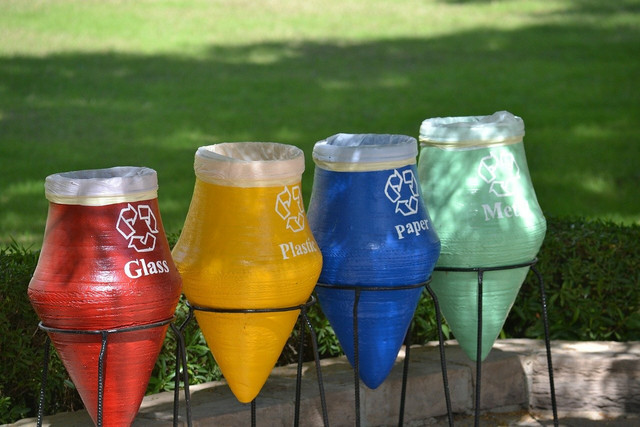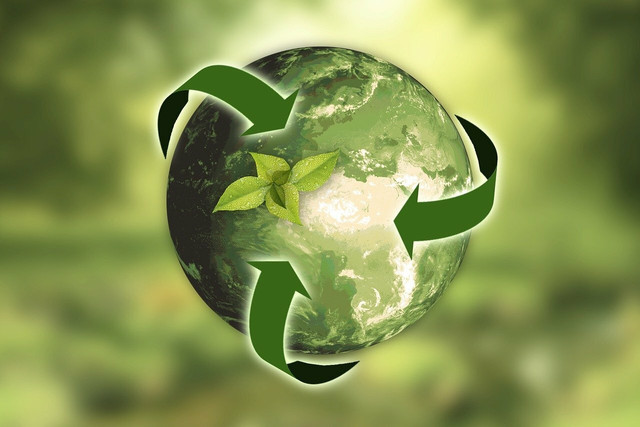Cradle to Cradle is a model sustainable product design for companies who want to make waste a thing of the past. Learn about how it works and what C2C certified means.
Around the 1970s, Swiss architect Walter R. Strahel proposed that an economy based on recycling could save companies money while also protecting consumers and the environment.
He coined the term cradle to cradle to refer to an alternative model of product design where product materials are brought back to the “cradle” of product creation instead of being laid to rest in the “grave” of the Earth’s ground.
The Concept of Cradle to Cradle Design

(Foto: CC0 / Pixabay / imordaf)
In their pioneering book Cradle to Cradle: Remaking the Way We Make Things, architect William McDonough & chemist Michael Braungart invite the reader to “imagine a world in which all the things we make, use, and consume provide nutrition for nature and industry – a world in which growth is good and human activity generates a delightful, restorative ecological footprint.”
Under their cradle to cradle design framework, the synthetic and raw materials used to manufacture products are viewed as nutrients that can contribute to the manufacturing of more products of the same kind, or be recycled in specific environments to help other natural life cycles flourish.
McDonough and Braungart’s vision of sustainable and economically motivated product design (inspired by Strahel’s ideas) is based on two core concepts: “technical nutrients” and “biological nutrients”.
Technical nutrients refer to the synthetic materials that are recycled to make a product of the same kind and quality.
Biological nutrients are raw materials that can’t be recycled to make another product with the same quality, but can be ecologically recycled; like food waste in compost, for example.
The Cradle to Cradle Certified Product Standard



(Foto: CC0 / Pixabay / anncapictures)
For a product to become Cradle to Cradle Certified, it must meet the five criteria of the Cradle to Cradle Certified Product Standard:
- Material Health (Safety): All Cradle to Cradle Certified product material origins are reported. Products must be safe for consumers and the environment.
- Product Circularity (Recyclability): A product’s synthetic materials must be able to be reused at the end of the product’s life, or its raw materials must be ecologically recyclable.
- Clean Air and Climate Production (Energy Costs): A product shouldn’t require high energy consumption or create air pollution.
- Water & Soil Stewardship (Water consumption): A product shouldn’t require excessive water consumption or cause soil nutrient depletion.
- Social fairness (Ethical Employment): The treatment of workers must be ethical.
For a product to be eligible for Cradle to Cradle Certification, it also cannot contain any banned chemicals.
A product registry of all Cradle to Cradle Certified products can be found here.
A number of third-party Accredited Assessors of the Cradle to Cradle Certified brand are authorized to certify the safe and sustainable quality of a company’s products.
Examples of C2C Products



(Foto: CC0 / Pixabay / PIRO4D)
Some concrete examples of C2C products are
- Beluga Jeans and Shirts: Denin clothing from Rajby Textiles PVT Ltd has a Platinum C2C certificate because the material is environmentally sourced and retailers, like C&A, will recycle used pieces as part of their “We Take it Back” Program.
- Abyssinian Oil Advanced Skincare: Beauty Kitchen UK Ltd uses only natural ingredients for their skincare products. All products can be returned to Beauty Kitchen for washing and reuse as part of their Return, Refill, Repeat program.
- BAYONIX Water: This bottle is made with a special environmentally friendly polymer (plastic) and it was designed without seals, coatings, or imprints so that it is completely biodegradable.
Drawbacks of C2C



(Foto: CC0 / Pixabay / mploscar)
Companies seeking to be eco-efficient try to increase their economic output (making and selling products for a profit) while decreasing their ecological footprint. C2C companies, in theory, strive to be eco-effective: they increase their economic output without leaving any ecological footprint.
In one study on Cradle to Cradle, researchers concluded that “Cradle to Cradle is eco-effective as a holistic theory and aims for innovation. But due to limitations from different sources, Cradle to Cradle in practice often turns out to be merely efficient.”
Because of limitations such as the often high cost of securing environmentally sourced materials, C2C may be seen as utopian by some entrepreneurs. Furthermore, the supply chain of a C2C product can be described as delicate as its manufacturing depends on ethically sourced materials. If specific materials can’t be sourced, for whatever reason, then costly disruptions in the supply chain may occur.
Read on:
- The 10 Main Causes for Water Pollution
- Sustainable Swimwear: 10 Ethical Bathing Suit Brands
- Ethical Underwear: 6 Sustainable Brands You Can Get Behind
Do you like this post?






